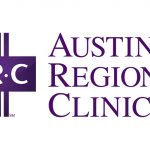What’s the difference between “single payer” and “Medicare for All”?
At CAPP, we believe that every person should receive high-quality, affordable health care through a coordinated, value-based delivery system. As Medicare for All calls have become commonplace in health policy conversation, the nuances of each plan are important for the health care system. Here are simple explanations and information about what the options mean.
| Medicare For All | Public Option | Medicare Buy-in | Medicaid Buy-in |
|---|---|---|---|
| Overview: Creates a single national health insurance program, administered by the federal government, for all US residents |
Overview: Federal public plan option offered to eligible individuals; would compete with other private insurance plans |
Overview: Provides an option for individuals to buy into Medicare |
Overview: Provides an option for individuals to buy into a state’s Medicaid program |
| Provider Payments: Typically fee-for-for-service (FFS) |
Provider Payments: Typically FFS — would not fall below current Medicare payment rates |
Provider Payments: Follows medicare payment rates (FFS) |
Provider Payments: States required to pay primary care providers at least medicare rates (FFS) |
| Provider Participation: All state-licensed and certified providers |
Provider Participation: Medicare (and some participating Medicaid) participating providers |
Provider Participation: Medicare participating providers |
Provider Participation: Medicaid providers, including medicaid managed care organizations |
| Eliminates Private Insurance? Yes |
Eliminates Private Insurance? No |
Eliminates Private Insurance? No |
Eliminates Private Insurance? No |
Financed:
|
Financed:
|
Financed:
|
Financed:
|
| Example: Senate Sen Sanders S.1129 Example: House |
Example: Senate Sen. Cardin S.3 Example: House |
Example: Senate Sen. Stabenow S.470 Example: House |
Example: Senate Sen. Schatz S.489 Example: House |
| Medicare For All | Public Option |
|---|---|
| Overview: Creates a single national health insurance program, administered by the federal government, for all US residents |
Overview: Federal public plan option offered to eligible individuals; would compete with other private insurance plans |
| Provider Payments: Typically fee-for-for-service (FFS) |
Provider Payments: Typically FFS — would not fall below current Medicare payment rates |
| Provider Participation: All state-licensed and certified providers |
Provider Participation: Medicare (and some participating Medicaid) participating providers |
| Eliminates Private Insurance? Yes |
Eliminates Private Insurance? No |
Financed:
|
Financed:
|
| Example: Senate Sen Sanders S.1129 Example: House |
Example: Senate Sen. Cardin S.3 Example: House |
| Medicare Buy-in | Medicaid Buy-in |
|---|---|
| Overview: Provides an option for individuals to buy into Medicare |
Overview: Provides an option for individuals to buy into a state’s Medicaid program |
| Provider Payments: Follows medicare payment rates (FFS) |
Provider Payments: States required to pay primary care providers at least medicare rates (FFS) |
| Provider Participation: Medicare participating providers |
Provider Participation: Medicaid providers, including medicaid managed care organizations |
| Eliminates Private Insurance? No |
Eliminates Private Insurance? No |
Financed:
|
Financed:
|
| Example: Senate Sen. Stabenow S.470 Example: House |
Example: Senate Sen. Schatz S.489 Example: House |
| Medicare For All |
|---|
| Overview: Creates a single national health insurance program, administered by the federal government, for all US residents |
| Provider Payments: Typically fee-for-for-service (FFS) |
| Provider Participation: All state-licensed and certified providers |
| Eliminates Private Insurance? Yes |
Financed:
|
| Example: Senate Sen Sanders S.1129 Example: House |
| Public Option |
|---|
| Overview: Federal public plan option offered to eligible individuals; would compete with other private insurance plans |
| Provider Payments: Typically FFS — would not fall below current Medicare payment rates |
| Provider Participation: Medicare (and some participating Medicaid) participating providers |
| Eliminates Private Insurance? No |
Financed:
|
| Example: Senate Sen. Cardin S.3 Example: House |
| Medicare Buy-in |
|---|
| Overview: Provides an option for individuals to buy into Medicare |
| Provider Payments: Follows medicare payment rates (FFS) |
| Provider Participation: Medicare participating providers |
| Eliminates Private Insurance? No |
Financed:
|
| Example: Senate Sen. Stabenow S.470 Example: House |
| Medicaid Buy-in |
|---|
| Overview: Provides an option for individuals to buy into a state’s Medicaid program |
| Provider Payments: States required to pay primary care providers at least medicare rates (FFS) |
| Provider Participation: Medicaid providers, including medicaid managed care organizations |
| Eliminates Private Insurance? No |
Financed:
|
| Example: Senate Sen. Schatz S.489 Example: House |





